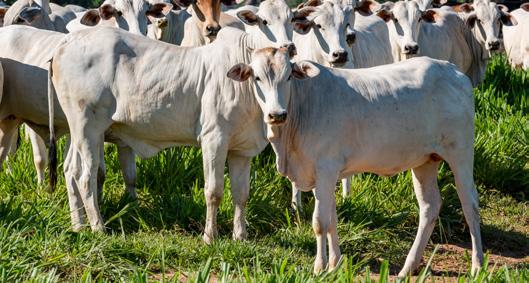LACK OF TRANSPARENCY PROVIDES IMPUNITY FOR THE CATTLE SECTOR
In terms of civil society’s ability to hold the
opportunity to ‘launder’ animals from ranches
industrial meat sector to account, lack of
where illegal or destructive practices have
transparency is particularly problematic in two
occurred through ranches not associated with
areas in Brazil: land tenure and cattle movement.
such practices.
If companies do not know who is producing
In 2020, Brazil’s largest beef processors
the commodities they use or trade, or where
announced several new initiatives and technological
those producers operate, they cannot know
developments to support their commitments in
whether the producers are operating responsibly
the Amazon and beyond. These include the use
or destroying forests or other ecosystems. If
of blockchain (JBS),211 various satellite-based
civil society has no oversight, there is no public
deforestation monitoring platforms and supply chain
accountability. The environmental stakes are too
monitoring tools for the Brazilian cattle sector.212
high for such ignorance.
The main barriers to clean supply chains and
Brazil does not have a universal national
forest protection are not technological. While these
system to track individual cattle. A large
services may improve corporate intelligence, they
proportion of cattle in Brazil move between
are set to undermine public scrutiny and corporate
ranches over the course of their lives, meaning
accountability. Visipec, for instance, used by both
that indirect supplies (cattle not originating on the
Marfrig and Minerva,213 specifically states that its
ranch from which the slaughterhouse ultimately
monitoring tool is ‘not openly available’ and was
purchases them) are a significant feature of
‘designed specifically for use by meatpackers (and
slaughterhouses’ supply chains.
service providers) … using Visipec will not give
208
There are
multiple stages in the standard four-year
NGOs any new information on potential non-
production cycle of Brazilian beef, from birth to
compliance issues’.214
slaughter, as a result of which cattle often spend
Transparency – public access to high-quality
time on two or more properties before arrival at
information – is vital to ensuring that commodities
the slaughterhouse.
sectors can be held to account for their
209
It is estimated that as many
as 95% of ranches buy from other properties
210
externalised environmental and social costs, and
– although they may have the same owner.
is thus a precondition for any meaningful efforts
This movement of cattle from ranch to ranch,
to address the social injustices and environmental
coupled with a lack of transparency, provides the
challenges the world faces.
37












